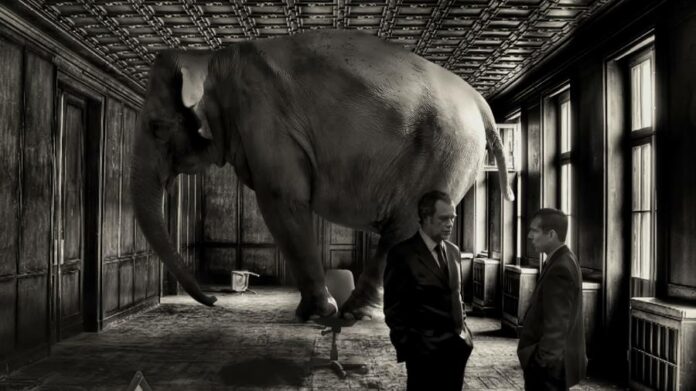This is the season for year-ahead outlooks, and the big questions the sellside are grappling with are obvious. Will inflation slow? Will central bank rate increases cause recessions, and if so, how severe will they be?
According to Solomon Tadesse of Société Générale, missing from the argument is the role fiscal policy could and should play in containing inflation. The (clients only) report from SocGen’s US quant head is titled “The Big Elephant in the Room: Fiscal Discipline, Burgeoning Budget Deficit, Debt Monetization and Financial Markets — A Quant Approach.”
Tadesse reckons that if government spending plans persist then central banks are probably going to jack up interest rates so aggressively that it “could derail the economy into a deep recession/depression”, and probably trigger another round of stimulus that would later need to be unwound.
In the absence of meaningfully addressing the fiscal indiscipline through sizable fiscal tightening, a brute force monetary policy tightening, as is currently the case, on its own — even if successful in temporarily tamping down inflation and providing the needed brake on overheating — would soon engender massive QE and fiscal spending in the event of the next crisis, leaving a vicious cycle of more frequent boom and bust cycles. The saga of the recent UK policy debacle — with the central bank being forced to commit to massive QE in the midst of its policy tightening due to a governmental bent towards fiscal expansion — should be taken as a preview of what awaits at a larger scale and as a lesson for correction.
He estimates that the “monetary policy space” — basically, how much central banks can raise interest rates without causing a deep recession —has been eroded by “years of unbridled deficit financing”, falling from as much as 20 per cent to just 2.5 per cent.
If fiscal disciple could be tightened, reducing the share of government debt within central banks to pre-pandemic levels, then the monetary policy space might rise to almost 10 per cent. As the note puts it:
The alternative sustainable approach might be to surgically address the ballooning deficit financing that would ease the monetary policy space, providing central banks wider and flexible policy space to navigate through inflationary/deflationary pressures as they see fit.
We have to say that we’re a little unconvinced. And not just because of the obvious political and economic issues caused by slashing spending amid an economic slowdown.
Firstly, the current 2.5 per cent monetary policy-increasing space that Tadesse has identified (absent fiscal tightening) seems to be based on the Fed-triggered market puke in late 2018. But US economic growth only slowed to 0.7 per cent in the fourth quarter of 2018, and never went negative, even for a single quarter. To say that we crossed the “hard landing threshold” just because markets for a few months violently unloaded their QE dinner seems a wild stretch.
Secondly, several central banks — most notably the Fed itself, but also the Bank of England, Riksbank and Bank of Canada — have so far raised rates by more than 2.5 percentage points without causing a hard landing, or even recessions yet. Of course, monetary policy acts with a lag so the full economic impact will only be seen in 2023. Nonetheless it is remarkable how little financial and economic breakage there has been so far.
That said, it does feel like we are in the bizarro world equivalent of the pre-pandemic era, where fiscal policy was overly tight and central banks were forced into flooring monetary policy. Now, fiscal policy is loose and central banks are tightening aggressively. In both cases it feels like a more judicious balance would probably better.
Or as Tadesse puts it:
. . . it is critical to have a wholesome view on all macro, including both the monetary and fiscal aspects, to achieve sustained normalisation out of the current crisis.






